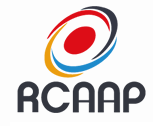Calcium and phophorus percent clearance ratios related to mineral nutrition in growing nelore (zebu) cattle
DOI:
https://doi.org/10.5433/1679-0359.1998v19n1p7Keywords:
Cattle, Nelore, Percent clearance ratio, Clcium, Phosphorus, Mineral imbalance.Abstract
Calcium, phosphorus and creatinine were measured in serum and urine samples taken from 80 growing Zebu cattle (Nelore), 8 to 24 months old, in order to calculate the percent clearance ratios of calcium and phosphorus, and verify the influences of mineral nutrition manegement and sex. The animals were raised under natural range conditions and divided in 4 groups (n-20) according to sex and mineral supplementary diet (sufficient or insufficient) to evaluate differences considering these two factors. The results were analysed through ANOVA. The serum levels of calcium and phosphorus were all within normal values. The average calcium percent clearance ratios were as follows: 0,65±0,69% (healthy males), 1,45±0,91% (healthy females), 1,53+1,80% (deficient males) and 2,06+1,59% (deficient females), with higher values in heifers. Phosphorus percent clearance ratios showed 0,38±0,56%> (males) and 0,43±0,38% (females) in healthy animals, and 1,58±1,82% (males) and 0,95±0,48%> (females) in the deficient ones, without differences related to sex. The animals in poor mineral nutrition management exhibited elevated calcium and phosphorus percent clearance ratios, as a possible reflex of the dietary related calcium and phosphorus metabolic imbalances.
Downloads
Downloads
Published
How to Cite
Issue
Section
License
Copyright (c) 2009 Mara Regina Stipp Balarin, Júlio Augusto Naylor Lisboa, Aguemi Kohayagawa, Márcio Rubens Graf Kuchembuck

This work is licensed under a Creative Commons Attribution-NonCommercial 4.0 International License.
Semina: Ciências Agrárias adopts the CC-BY-NC license for its publications, the copyright being held by the author, in cases of republication we recommend that authors indicate first publication in this journal.
This license allows you to copy and redistribute the material in any medium or format, remix, transform and develop the material, as long as it is not for commercial purposes. And due credit must be given to the creator.
The opinions expressed by the authors of the articles are their sole responsibility.
The magazine reserves the right to make normative, orthographic and grammatical changes to the originals in order to maintain the cultured standard of the language and the credibility of the vehicle. However, it will respect the writing style of the authors. Changes, corrections or suggestions of a conceptual nature will be sent to the authors when necessary.


















